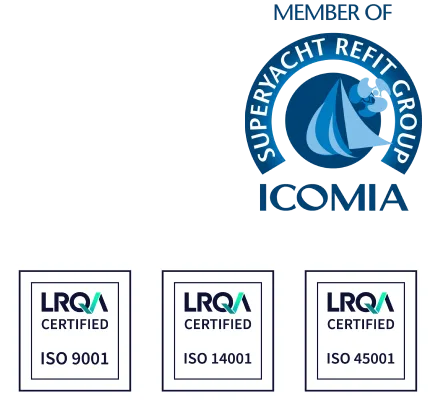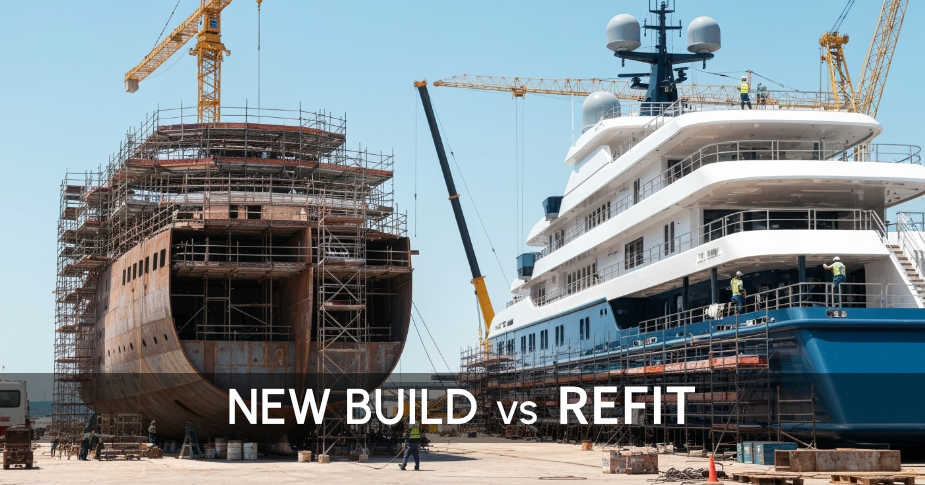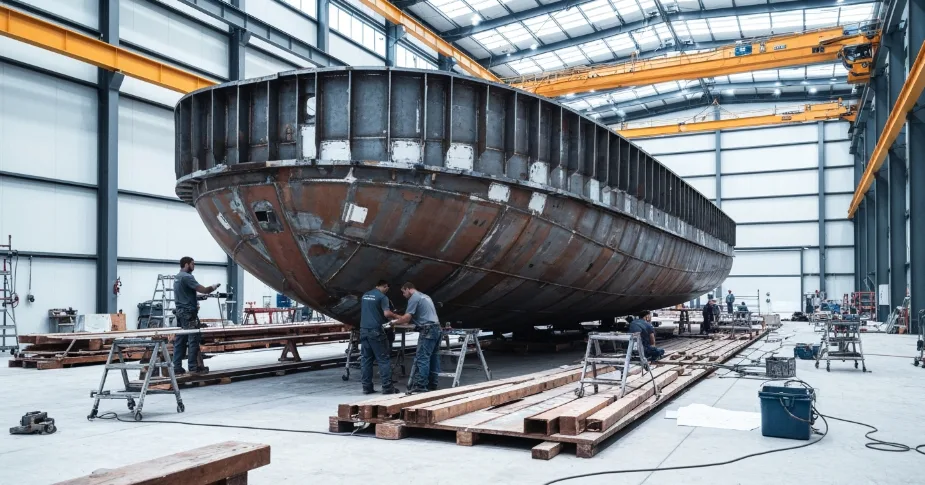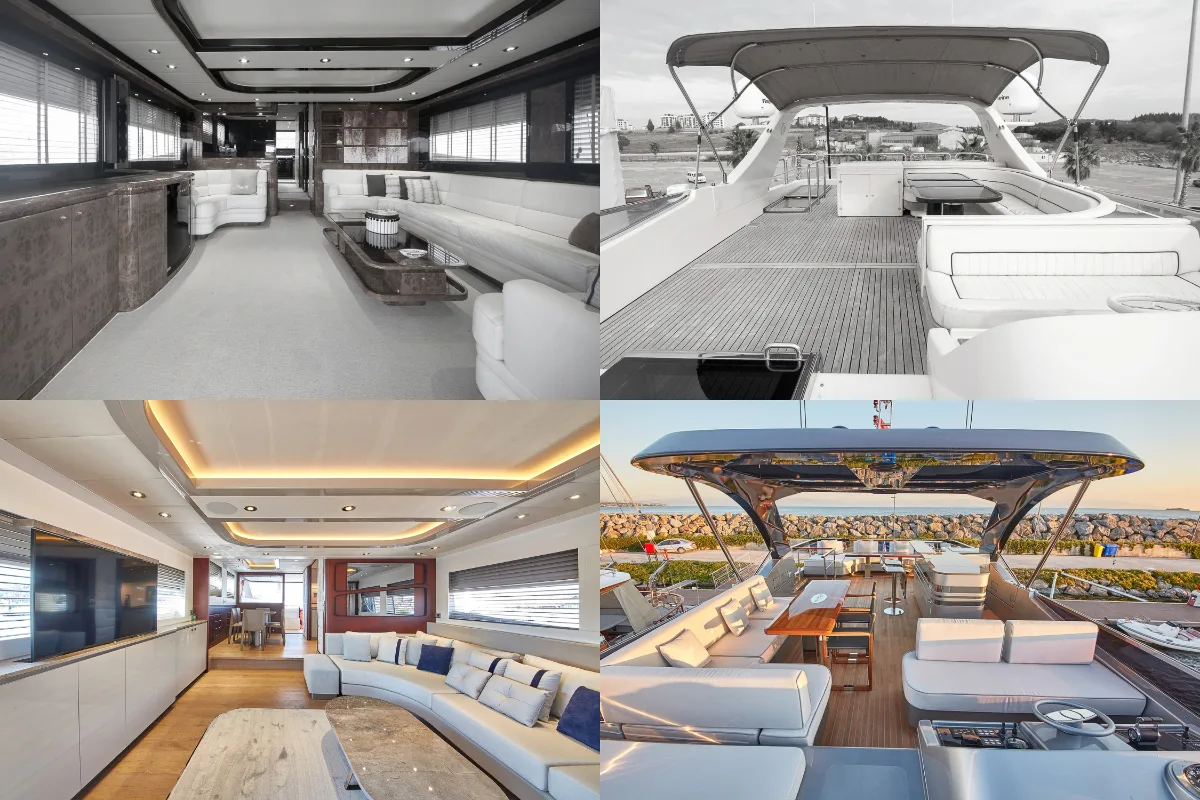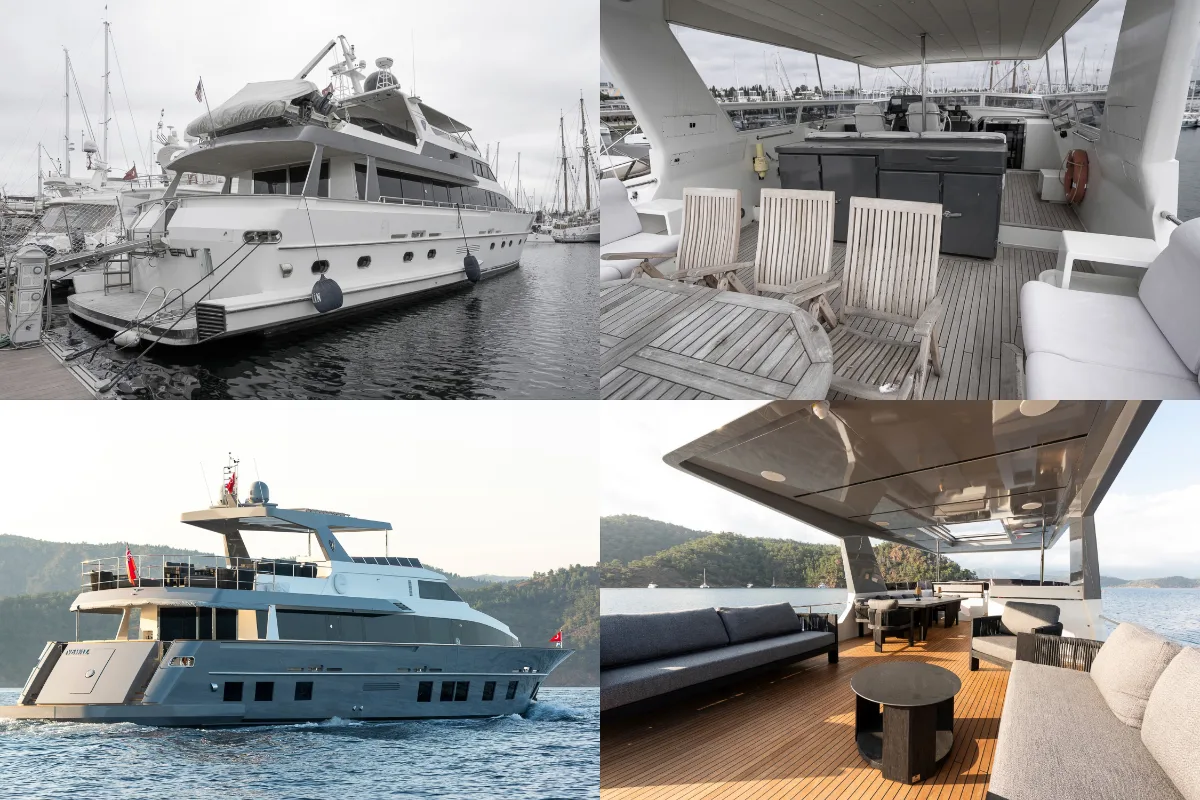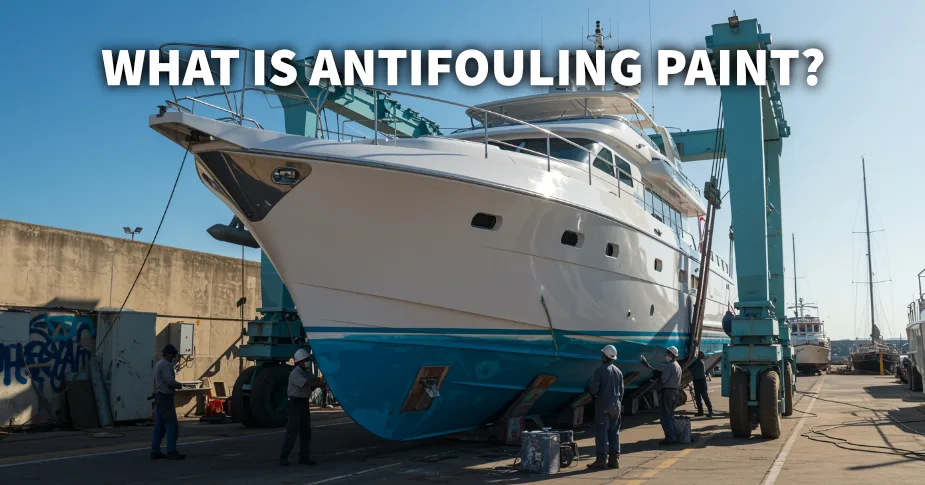For yacht owners and investors standing at the crossroads of a major decision, the question is simple, build new or refit? But the answer is anything but. Each path comes with its own complexities, costs, timelines, risks, and long-term implications. In this guide, we’ll unpack both options with brutal clarity, so you can make the right decision with confidence.
Cost Comparison: What You’ll Spend (and Where)
Let’s start with the most pressing factor: money. Building a new yacht is a monumental capital expenditure. But refitting? It’s not exactly pocket change either.
| Cost Area | New Build | Refit |
|---|---|---|
| Total Cost Range | €10M–€150M+ | €500K–€20M+ |
| Cost per Gross Tonnage (GT) | €30,000–€50,000 | €10,000–€25,000 |
| Design & Engineering | Full design team needed | May use existing layout |
| Project Management | Extensive & long-term | More agile and modular |
| Classification Costs | Entirely from scratch | Partial, if maintaining existing flag/class |
| Technical Risk | Low (new systems) | Medium (legacy issues) |
Timeline: When Will You Actually Set Sail?
Time is money and for yacht owners, it’s also opportunity lost. A new build is a marathon. A refit? A smart sprint, if planned well.
| Phase | New Build | Refit |
|---|---|---|
| Concept & Design | 6–12 months | 1–3 months |
| Execution & Build | 24–36 months | 6–12 months |
| Total Duration | 30–48 months | 7–15 months |
Customization & Design Freedom
When it comes to creativity, a new build is a blank canvas. You’re not working within any constraints except gravity and budget.
Refit, however, often requires working with the “bones” of an existing yacht. But today’s refit specialists can achieve astonishing transformations.
| New Build | Refit | |
|---|---|---|
| Layout Freedom | 100% | 60–90% |
| Tech Integration | All modern systems | Selective retrofitting |
| Regulatory Flexibility | Full compliance design | Upgrade to meet current codes |
Technical Risks & Maintenance Outlook
With a new build, everything is brand new zero hours, zero wear, zero surprises.
Refits, on the other hand, require careful surveying. Old piping, fatigued structures, or outdated electronics could lead to mid-project scope changes.
| New Build | Refit | |
|---|---|---|
| Hidden Defects | Minimal | Medium–High risk |
| Predictability | High | Depends on pre-refit survey |
| Lifecycle Expectancy | 25–40 years | Adds 10–20 years |
Resale Value & Perception
Superyacht resale markets favor modern, cutting-edge design. A new build will almost always carry higher prestige and resale value.
However, a refit done at a top-tier shipyard with a respected brand (like KRM Yacht) can hold value very well, if well-documented and class compliant.
| New Build | Refit | |
|---|---|---|
| Prestige | High | Moderate–High (depends on refit scope) |
| Buyer Appeal | Universal | More niche |
| Asset Classification | “New” | “Modified” or “Rebuilt” |
Sustainability and Environmental Impact
Environmental concerns are now central to yacht ownership.
Refitting an existing yacht significantly reduces carbon footprint, as it reuses the hull and main structure. A new build consumes more materials and energy over time.
| New Build | Refit | |
|---|---|---|
| Embodied Carbon | High | Low |
| Resource Consumption | Full lifecycle | Partial |
| Eco-Perception | Mixed | Strong (when highlighted in documentation) |
Green Tip: Refit projects that include hybrid propulsion or battery upgrades can position you as a sustainable yacht owner.
Final Decision Matrix: Which One is Right for You?
Talk to the Experts
We’ve managed both new builds and complex refits across the Mediterranean. If you’re weighing your options, let our expert team walk you through cost models, technical timelines, and realistic outcomes.
Contact Us Today to start your project planning with clarity and confidence.
FAQs
Is it cheaper to refit a yacht or build a new one?
In most cases, refitting a yacht is significantly more cost-effective than commissioning a new build. A refit allows you to modernize key systems, interiors, and features at a fraction of the cost though the final budget depends on the yacht’s condition and scope of work.
How long does a new yacht build take compared to a refit?
A new build typically takes 24 to 48 months, depending on size, design complexity, and shipyard capacity. A major refit, by contrast, can often be completed within 6 to 18 months, depending on structural work, custom elements, and parts availability.
What are the hidden costs of refitting a yacht?
Unexpected issues discovered during the refit such as corrosion, outdated wiring, or undocumented modifications can increase the budget. Contingency planning and technical surveying are key to managing these risks.
Can a refitted yacht match the performance of a new build?
In some cases, yes. Especially when the refit includes upgrades to propulsion, stabilizers, electrical systems, and hull optimization. However, certain design limitations in older hulls may restrict performance compared to a purpose-built modern yacht.
Which option holds better resale value: new build or refit?
A well-built new yacht often holds stronger long-term resale value, especially from a reputable shipyard. That said, a professionally refitted yacht can also be highly competitive on the market if the refit is documented, recent, and executed by a respected shipyard.
Is it possible to convert a private yacht into a charter-ready vessel through refit?
Yes. Many refits are driven by the desire to transition a yacht into commercial use. This may involve structural modifications, safety upgrades, and compliance with SOLAS, MARPOL, and MLC regulations often at a lower cost than building a new charter yacht.
When does a refit no longer make financial sense?
If the yacht’s core structure is compromised, or if the cost of refit exceeds 60–70% of a comparable new build’s cost, a new build may offer better long-term value, warranty coverage, and customization potential.
Do both refits and new builds require classification society involvement?
Yes. Major refits and all new builds require class approval if the vessel is classed or operating commercially. The scope of class involvement depends on the nature of the work and the vessel’s intended use post-project.
